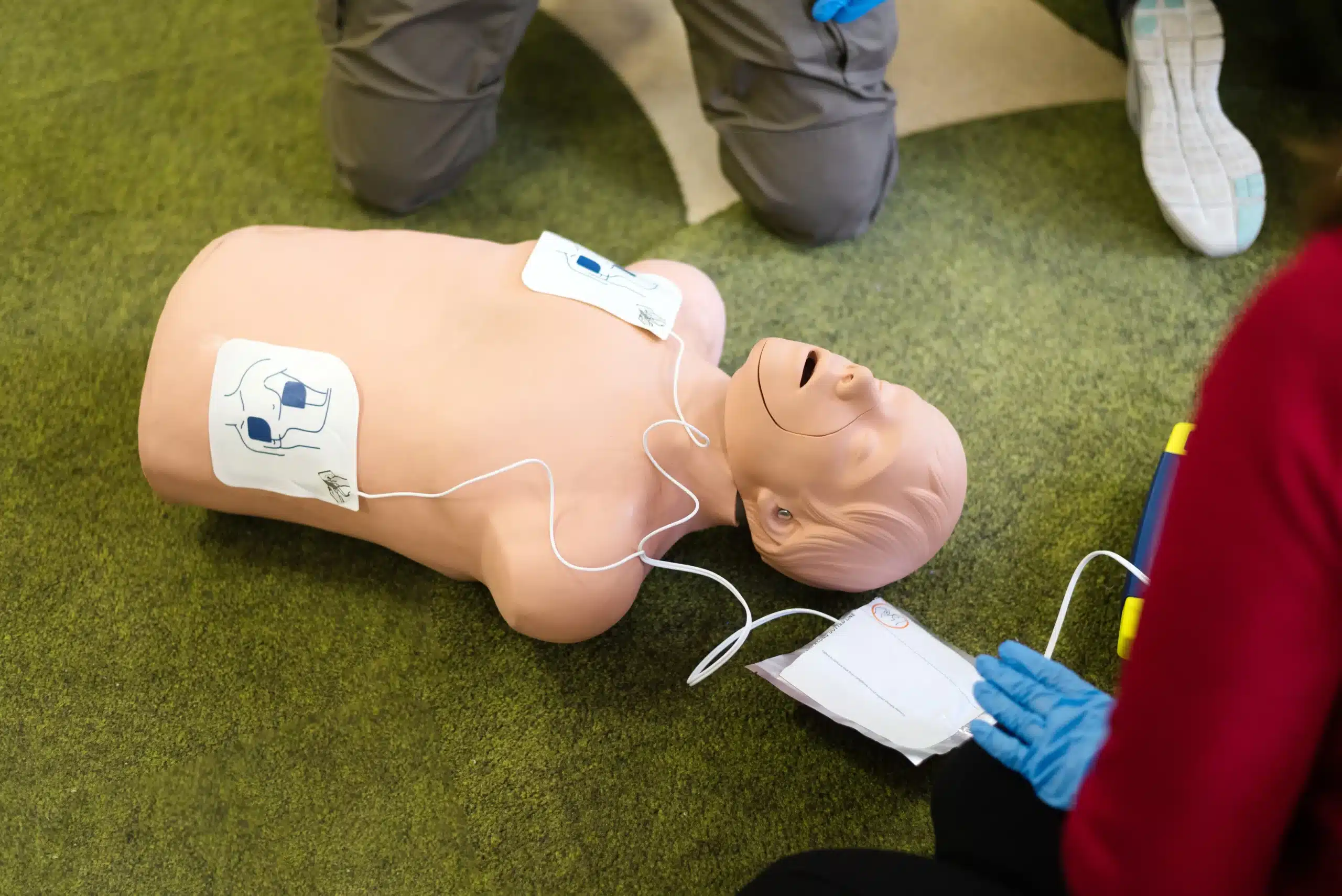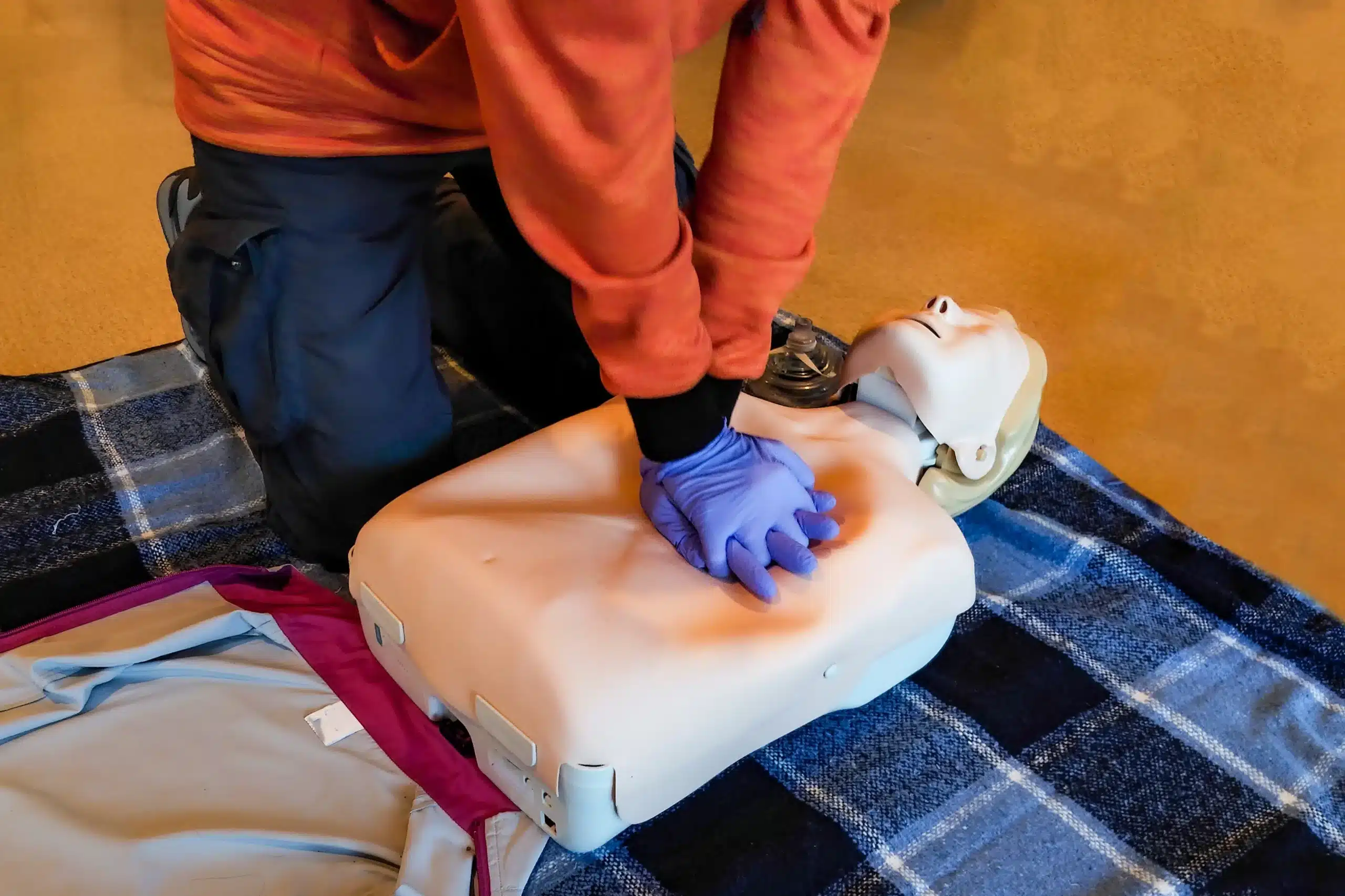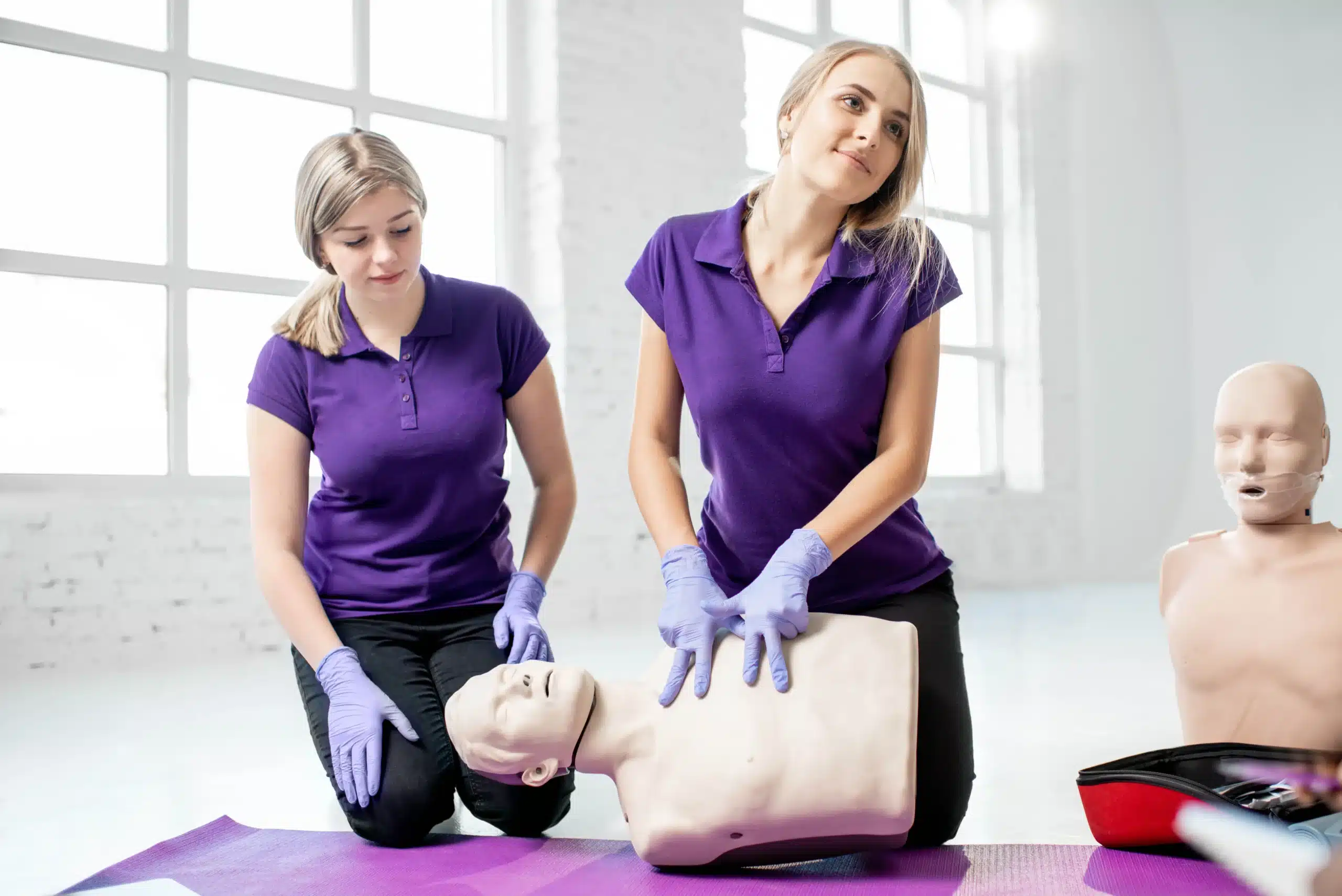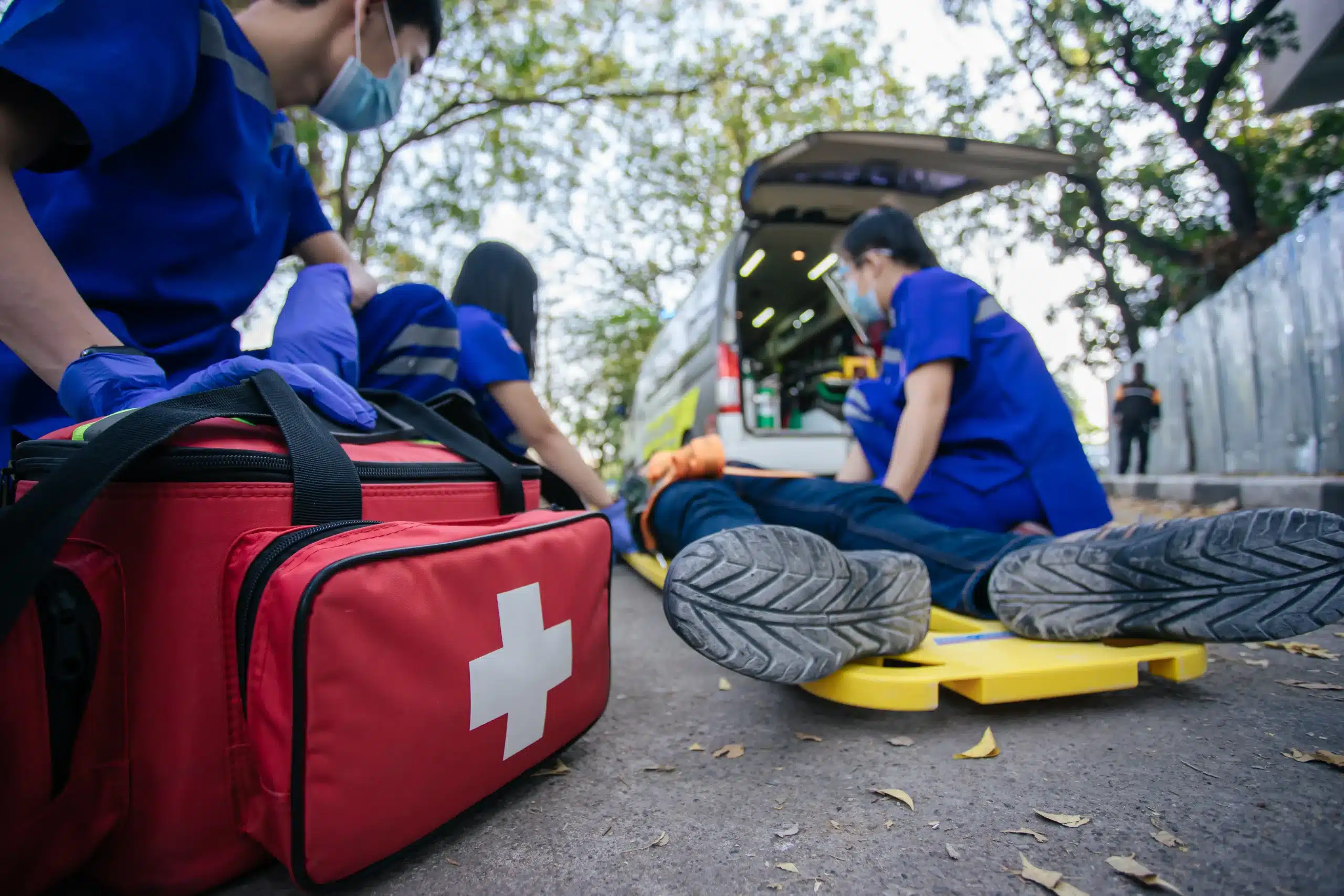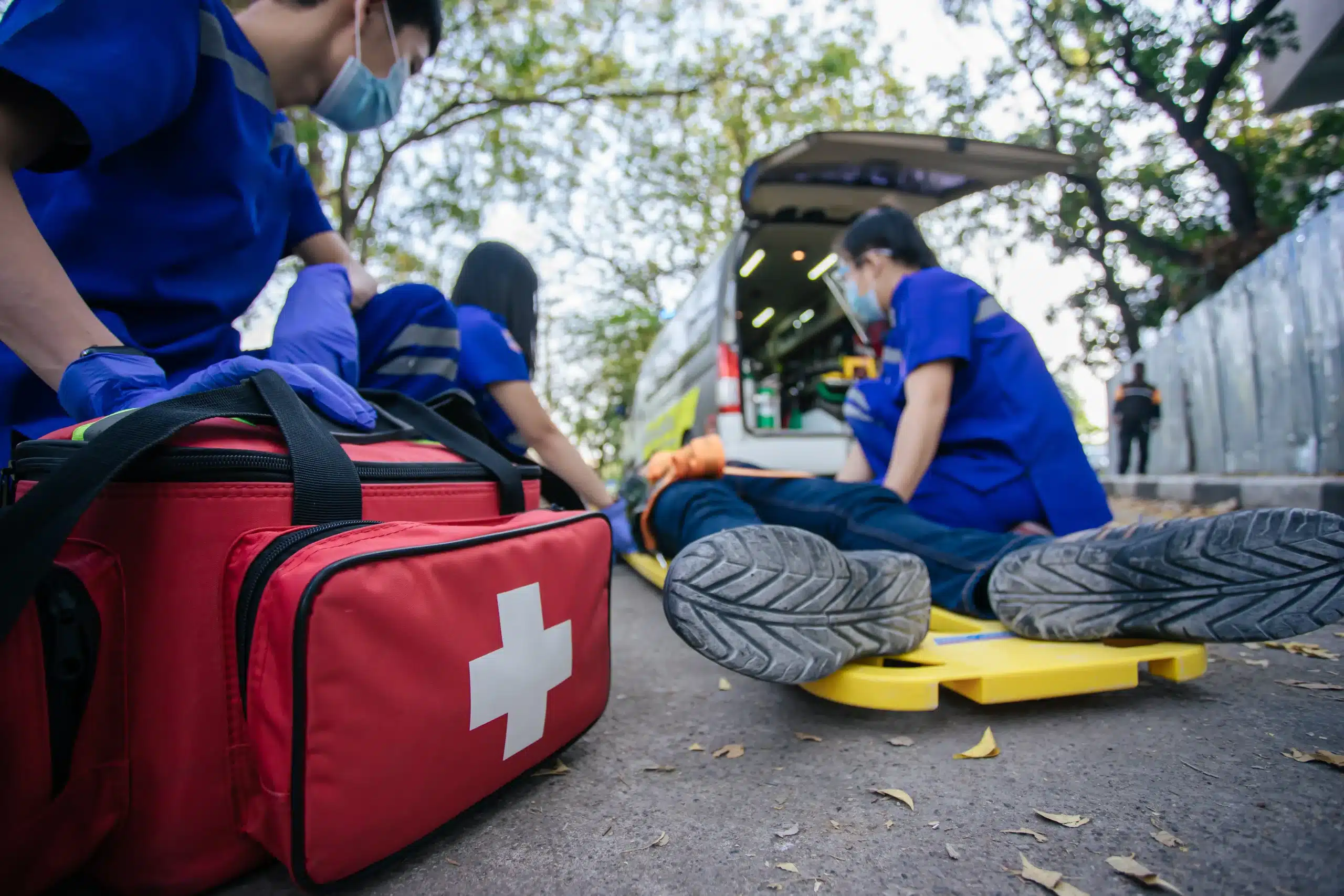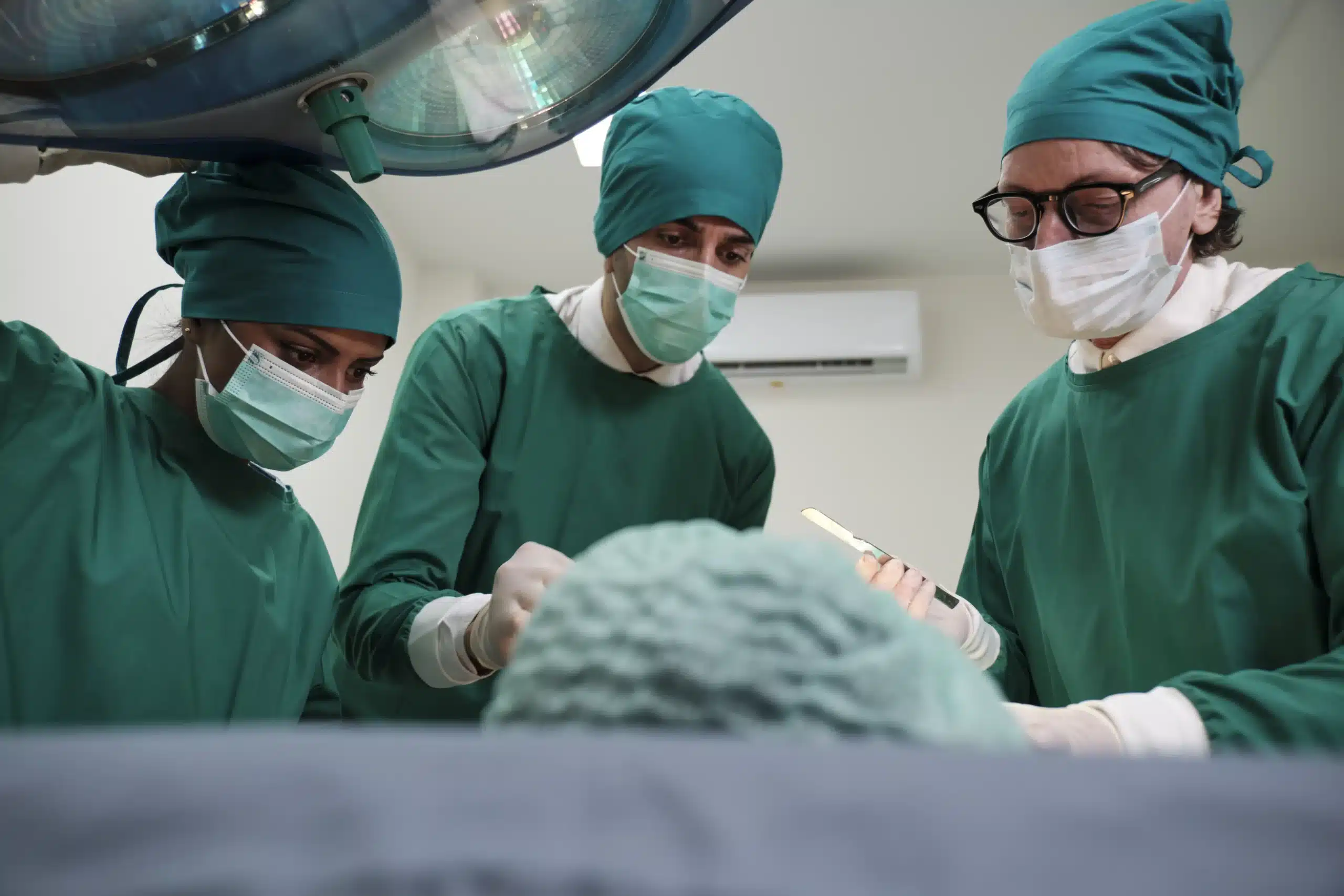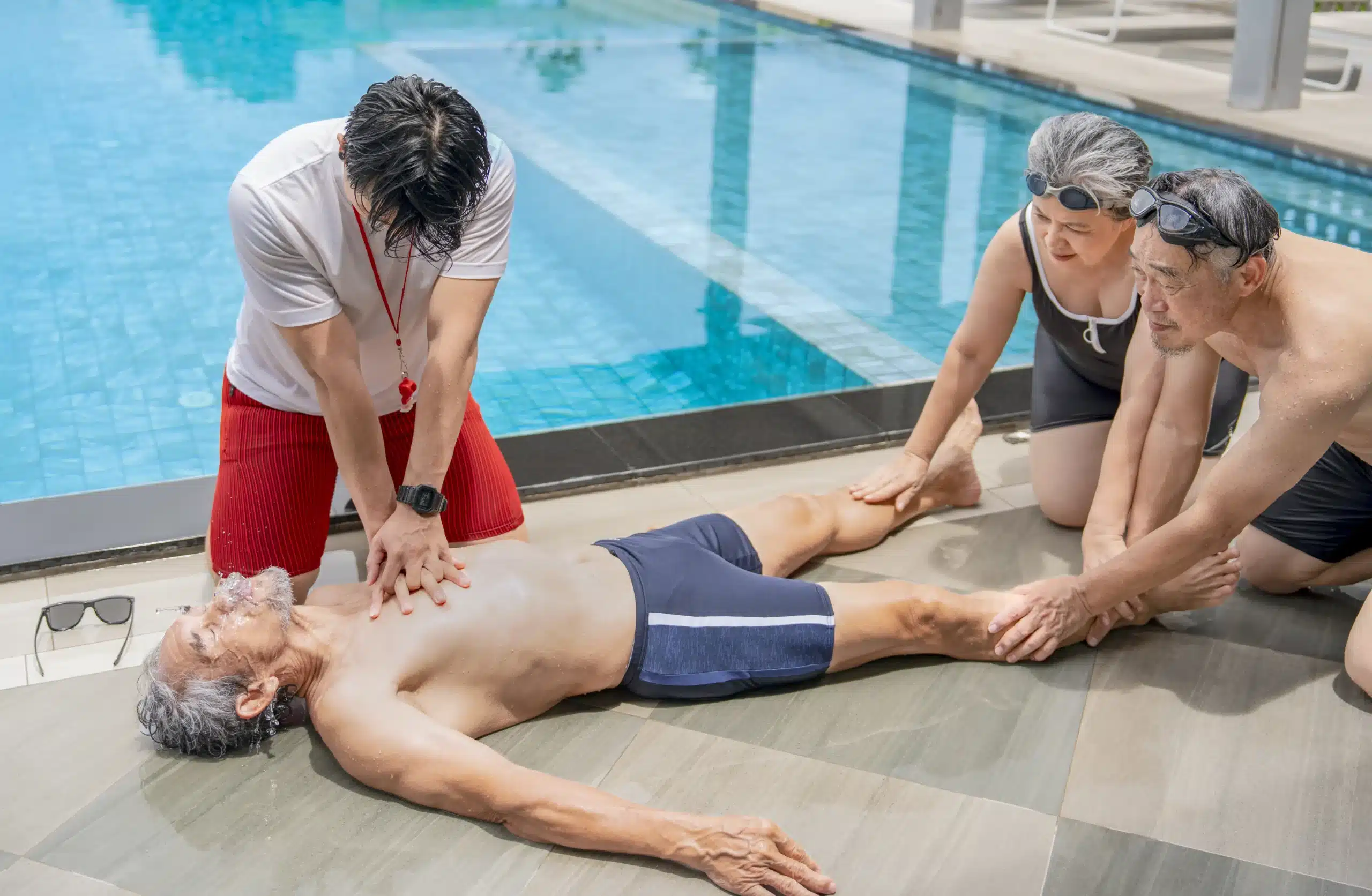Juggling work, family, and other commitments can make it challenging to find time for essential training like CPR. That’s where online CPR classes in San Jose come in. They offer a flexible way to learn these lifesaving skills without disrupting your busy schedule. This guide will walk you through everything you need to know about online CPR classes in San Jose, from course content and certification to finding reputable providers and preparing for your online learning experience. We’ll also discuss the importance of combining online learning with hands-on practice to ensure you’re fully prepared to respond effectively in a real-life emergency. Let’s empower you to become a confident and certified lifesaver.
Key Takeaways
- Online CPR training offers a flexible learning experience: Study the material at your own pace and from anywhere, making it ideal for busy schedules.
- Combine online learning with in-person skills practice: Solidify your knowledge and gain confidence by practicing CPR techniques with a certified instructor.
- Select a reputable provider for valid certification: Ensure your CPR certification is widely recognized by choosing a course from an accredited organization like the American Heart Association or the American Red Cross.
What Are Online CPR Classes?
Online CPR classes offer a convenient way to learn the lifesaving skills of cardiopulmonary resuscitation, often from the comfort of your own home. These courses typically use a combination of videos, interactive simulations, and downloadable resources to teach you the core principles of CPR, including chest compressions, rescue breaths, and how to recognize the signs of a cardiac arrest. While online CPR classes provide a solid foundation, they often require a subsequent in-person skills session to complete your certification. This blended learning approach allows you to study the material at your own pace online and then demonstrate your practical skills with a certified instructor.
Benefits of Online CPR Training
One of the biggest advantages of online CPR training is the flexibility. You can study whenever and wherever it fits your schedule, making it a great option for busy professionals, parents, and students. Online courses also tend to be more affordable than traditional in-person classes. This accessibility makes it easier for more people to gain these essential lifesaving skills. Remember that hands-on practice is crucial for developing the muscle memory and confidence needed to perform CPR effectively in a real emergency. Think of the online portion as building your knowledge, while the in-person component solidifies your practical skills.
Available Online CPR Courses
When selecting an online CPR course, it’s essential to choose one from a recognized and reputable organization like the American Heart Association or the American Red Cross. This ensures your certification will be widely accepted and meets established standards. Santa Clara CPR Classes offers a variety of AHA certification courses, including BLS, ACLS, and PALS, combining online learning with essential hands-on practice. While the online component provides flexibility, confirm that your chosen course includes the required in-person skills evaluation for a valid certification. Check out our low price guarantee. Have questions? Contact us.
Top Online CPR Class Providers in San Jose
Finding the right online CPR class can feel overwhelming with so many options. To help narrow your search, we’ve compiled a list of reputable providers offering online CPR certification in San Jose. Remember to verify that the certification meets your specific requirements before enrolling.
Santa Clara CPR Classes
Santa Clara CPR Classes offers a variety of online CPR training options tailored to individuals and organizations. The courses focus on providing comprehensive knowledge and skills in CPR and first aid. You can explore their CPR course options to see if they’re a good fit.
American Red Cross
The American Red Cross is a well-known provider of CPR and First Aid training. They offer blended learning options that combine online coursework with in-person skills sessions. This flexible approach lets you learn at your own pace while still getting hands-on training.
Emergency and Health Training Center
The Emergency and Health Training Center provides American Heart Association-certified CPR, BLS, ACLS, PALS, and First Aid classes. Their online courses aim to equip participants with the skills and knowledge to respond effectively in emergencies. Visit their website for more information on course offerings and schedules.
ProCPR
ProCPR offers a range of online CPR courses accepted by employers across various industries. Their user-friendly courses provide a comprehensive understanding of CPR techniques and emergency response. See if their certification aligns with your workplace requirements.
National CPR Foundation
While the National CPR Foundation doesn’t directly offer courses, they emphasize choosing a reputable provider for online CPR training. They recommend seeking out accredited courses from organizations like the American Heart Association or the American Red Cross to ensure quality and reliability. This advice is helpful to keep in mind as you research different online CPR class providers.
Course Content and Certification
CPR certification is a valuable skill, and thankfully, there are many convenient ways to get certified. This section covers what you’ll learn in online CPR classes, details about certification and recertification, and the importance of a valid online certification.
What You Will Learn in Online CPR Classes
Online CPR classes cover essential lifesaving skills, starting with recognizing the signs of a cardiac arrest. You’ll learn how to perform CPR on adults, children, and infants, including chest compressions and rescue breaths. Many courses also cover how to use an automated external defibrillator (AED) and what to do if someone is choking. Online courses offer flexibility to learn the basics, but in-person skills sessions are essential for developing the muscle memory and confidence needed in real-life emergencies. For more information on CPR training, check out our BLS course page.
Certification and Recertification
After completing an online CPR course and any required in-person skills check-offs, you’ll receive your certification. CPR certifications are typically valid for two years. To maintain your skills and keep your certification current, all CPR certification programs require recertification through a refresher course. You can find more details about recertification options on our RQI classes page.
Validity of Online CPR Certifications
It’s important to ensure your chosen online CPR course comes from a recognized organization like the American Heart Association or American Red Cross. This ensures your certification will be widely accepted. While online CPR certifications are generally accepted, choosing a course from a reputable organization validates your training. This gives employers and other organizations confidence that you’ve received high-quality instruction. If you have questions about our certifications or which course is right for you, please contact us. We’re happy to help!
Your Online Learning Experience
Online CPR training offers a convenient way to learn lifesaving skills, fitting easily into your schedule. But how effective is it, and what should you expect? This section breaks down the online learning experience, covering course formats, assessments, and the benefits of blending online learning with in-person skills practice.
Course Formats and Platforms
Online CPR courses typically use a variety of methods to deliver information. Expect videos demonstrating CPR techniques, interactive exercises, downloadable resources, and quizzes to test your knowledge. Many providers offer courses through user-friendly online platforms accessible from your computer or mobile device. This allows you to learn at your own pace, revisiting material as needed. As San Jose CPR points out, online learning offers flexibility, but combining online coursework with hands-on practice is key for truly mastering these skills. Look for courses that offer clear instructions, engaging content, and mobile-friendly access.
Skills Assessments and Practice
While online courses effectively teach the cognitive aspects of CPR, practicing on a mannequin is essential. In-person training provides the opportunity to practice your skills, receive feedback from certified instructors, and gain the confidence to perform CPR in a real emergency. This hands-on experience is invaluable for developing muscle memory and mastering the correct techniques. Check if the course includes a skills assessment session and what that entails.
Combining Online and In-Person Learning
Blending online learning with in-person skills sessions offers the most comprehensive training. You can learn the fundamentals online at your convenience and then solidify your skills through hands-on practice. This approach ensures you understand the “why” behind the techniques and develop the confidence to act effectively under pressure. The American Heart Association and the American Red Cross are among the recognized organizations offering blended learning programs, ensuring your certification is valid and respected. Consider this combined approach for the most effective CPR training experience. When choosing a provider, confirm they offer this blended learning format and if the in-person training is included in the course fee.
Cost of Online CPR Classes in San Jose
CPR certification is an investment in your skills and ability to respond to emergencies. Understanding the costs associated with online CPR classes in San Jose can help you budget and find the right training program.
Average Price Range
The cost of online CPR classes in San Jose, including the online portion, skills testing, and certification card, varies depending on the certification level. For example, an ACLS class, which is more advanced than basic CPR, typically costs around $290. This price reflects the comprehensive training and ensures participants receive the knowledge and skills needed for certification. Basic CPR and First Aid classes are generally less expensive. Check out our low price guarantee.
Discounts and Promotions
Many CPR training providers in San Jose offer discounts, so it’s always worth asking. Some providers offer discounts for groups, a great option if you’re certifying a team of employees or a group of friends. Allied health students can also often find discounted rates, making training more accessible. Contact us to learn more about discounts.
Group Training
If you need to train a group, many CPR training providers in San Jose offer on-site training at your location. This can be a convenient and cost-effective way to certify multiple employees or members of an organization. Some providers offer this service at no extra charge, streamlining the training process. We offer a variety of American Heart Association certification courses, including BLS, ACLS, PALS, and First-aid. We also offer RQI classes.
Choosing the Right Online CPR Class
Finding the right online CPR class involves a little research to ensure it meets your needs and learning style. Here’s what to keep in mind:
Factors to Consider
Think about why you’re taking CPR certification. Are you required to have it for your job, or are you learning it for personal knowledge? This will help determine the right level of certification. Also, consider your schedule and how an online format fits into it. While online courses offer flexibility, combining them with an in-person skills session is essential for truly mastering the techniques. Hands-on practice builds the confidence you’ll need to respond effectively in a real-life emergency. If you’re in the San Jose area, check out CPR training options at our Santa Clara location. We offer a variety of courses to fit your needs.
Comparing Courses
Not all online CPR courses are created equal. Look at what each course offers. Some might focus solely on adult CPR, while others might include infant and child CPR. Some courses may also cover AED use and first aid. It’s helpful to compare several courses before making a decision. A good starting point for comparing options is this guide to CPR classes in San Jose, which breaks down different certification levels, course formats, and training providers.
Accreditation and Recognition
Perhaps the most crucial factor is accreditation. Make sure your chosen online CPR course is from a recognized organization like the American Heart Association or the American Red Cross. A recognized certification ensures that your training meets established standards and will be accepted by employers and organizations requiring CPR certification. While online learning is convenient, choosing a course from a reputable organization validates your certification and ensures you receive high-quality training. You can find more information on online CPR classes and what to look for here.
Prepare for Your Online CPR Class
So, you’re ready to take an online CPR class? Great! Here’s what you need to know to prepare and make the most of your online learning experience. A little prep work goes a long way.
Technical Requirements
Getting your tech set up correctly before class starts can prevent frustration. First, you’ll need a reliable internet connection. No one wants to deal with buffering during a critical lesson. Next, make sure your computer’s audio and video are working. Test your speakers and microphone beforehand. Finally, some online CPR courses might require a webcam, especially if there’s a live component. Check the course requirements and have yours ready.
Tips for Successful Online Learning
Online learning offers flexibility, but it also requires self-discipline. Create a dedicated learning space free from distractions. Treat your online CPR class like an in-person class—minimize interruptions and focus on the material. Take notes just like you would in a traditional classroom setting. Actively participate in any discussions or quizzes. While online CPR classes offer a flexible way to learn the basics, combining them with an in-person skills session is essential for mastering the techniques and building the confidence to act effectively in real-life emergencies. At Santa Clara CPR Classes, we offer this blended approach to give you the best of both worlds.
Common Concerns and Questions
One common question is about certification. Rest assured, online CPR certification from a recognized organization like the American Heart Association is valid and accepted. Make sure your chosen online CPR course comes from a reputable provider for valid certification. Another concern we hear is about the lack of hands-on practice in a purely online course. That’s why we strongly recommend supplementing your online learning with an in-person skills session. This combination allows you to learn at your own pace online and then practice those crucial skills with a certified instructor. You can even do part of your CPR class online and have an instructor come to your San Jose location for the hands-on portion. Contact us to learn more about our flexible options.
Related Articles
- CPR Renewal in San Jose: Your Complete Guide – Santa Clara CPR Classes
- CPR Certification in San Jose: A Complete Guide
- Santa Clara CPR Classes: A Complete Guide
- CPR Courses in Milpitas: Your Complete Guide – Santa Clara CPR Classes
- ACLS HeartCode Santa Clara: Your Certification Guide – Santa Clara CPR Classes
Frequently Asked Questions
Are online CPR certifications valid?
Yes, online CPR certifications from recognized organizations like the American Heart Association or the American Red Cross are widely accepted. However, most online certifications require an in-person skills assessment with a certified instructor to be considered valid. Always confirm that your chosen course includes this crucial hands-on component.
What’s the difference between online and in-person CPR training?
Online CPR training offers the flexibility to learn the material at your own pace, anytime, anywhere. In-person training provides hands-on practice with a mannequin and direct feedback from an instructor. A blended approach, combining online learning with an in-person skills session, is often the most effective way to learn CPR.
How much do online CPR classes cost in San Jose?
The cost varies depending on the provider and the type of certification. Basic CPR and First Aid classes are typically less expensive than advanced certifications like ACLS. Many providers offer discounts for groups, students, or other special categories. It’s always a good idea to contact the provider directly to inquire about pricing and any available discounts.
What should I look for when choosing an online CPR class?
Look for courses from reputable organizations like the American Heart Association or the American Red Cross to ensure your certification is valid and meets established standards. Consider the course content, format, and whether it includes an in-person skills assessment. Also, think about your learning style and schedule to find a course that fits your needs.
How can I prepare for my online CPR class?
Ensure you have a reliable internet connection, working audio and video, and any required webcam functionality. Create a quiet, distraction-free learning space where you can focus on the material. Just like an in-person class, take notes, actively participate, and don’t hesitate to ask questions.
